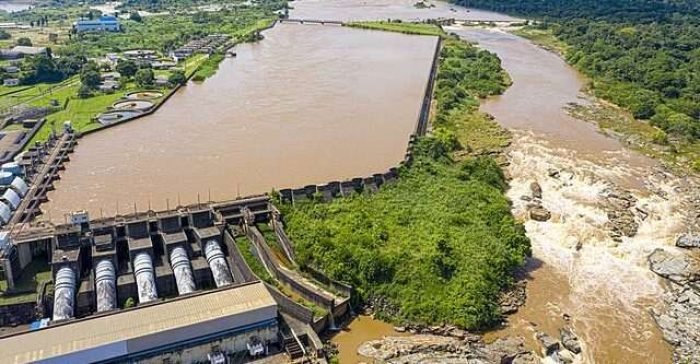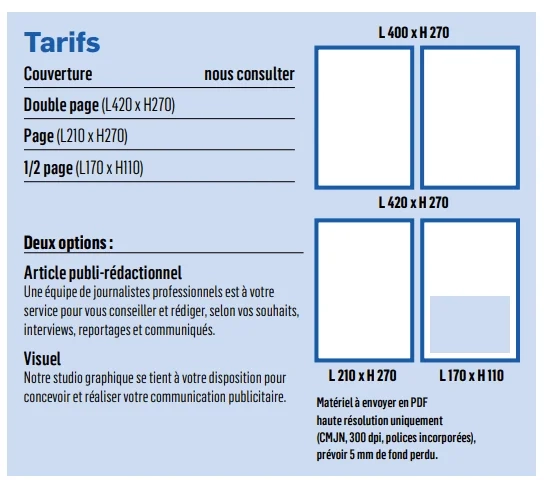Space not available
Reserve this advertising space
Selected ad format
The file format is not recognized
Click here for
télécharger une annonce
Cliquer ici pour télécharger
an announcement
Ici glisser – déposer ou
télécharger une annonce
Send the ad up to 8 days after payment
Un lien vous sera adressé par contact@via-agency.media
Reserved space
Announcement transmitted
Reference

Cameroon derives most of its electricity from hydropower. However, Cameroon's immense hydropower potential remains largely untapped. Projects are therefore underway across the country to meet the rapidly growing demand for electricity.
Space not available
Reserve this advertising space
Selected ad format
The file format is not recognized
Click here for
télécharger une annonce
Cliquer ici pour télécharger
an announcement
Ici glisser – déposer ou
télécharger une annonce
Send the ad up to 8 days after payment
Un lien vous sera adressé par contact@via-agency.media
Reserved space
Announcement transmitted
Reference
The country has hydroelectric power plants from which electricity is produced. Among these, we can mention Songloulou, the largest power plant in Cameroon, producing 54% of the electricity mix. Commissioned in 1981, this plant has a capacity of 384 MW. Next to the latter, we find the Edea power plant, which is one of the oldest in Cameroon. Commissioned in 1950, the Edea power plant has a capacity of 276 MW. The Lagdo hydroelectric power plant, operational since 1986, has a capacity of 72 MW.
The government continues to look to the hydroelectric sector to provide new production capacity essential for industrial development.
The largest project currently nearing completion is Nachtigal, located approximately 65 kilometers from Yaoundé. The power plant will be fully operational in 2024. The Sanaga River was diverted to allow the hydroelectric development of this major project. It is the largest river in Cameroon (918 km). Its flow is four times greater than that of the Seine. With an installed capacity of 420 MW, the Nachtigal hydroelectric development will produce, upon its commissioning in 2024, the equivalent of 30% of the country's energy production capacity. The construction progress rate to date is 70%, and the injection of the first megawatts into the Southern Interconnected Network (RIS) is scheduled for July 2023. The construction price of 786 billion CFA francs (1.2 billion euros) includes the cost of new transmission lines to connect the country.
Once completed, the project will represent 30% of Cameroon's generating capacity, and the government expects that low-cost production will help reduce electricity prices. Nachtigal is expected to help increase the proportion of the population with access to electricity beyond the current level of 74%.
Space not available
Reserve this advertising space
Selected ad format
The file format is not recognized
Click here for
télécharger une annonce
Cliquer ici pour télécharger
an announcement
Ici glisser – déposer ou
télécharger une annonce
Send the ad up to 8 days after payment
Un lien vous sera adressé par contact@via-agency.media
Reserved space
Announcement transmitted
Reference
Work on the 30 MW Lom Pangar dam in eastern Cameroon is also nearing completion.
In addition, Cameroonian authorities have partially restarted the Mekin hydroelectric power plant. Located in southern Cameroon, the facility injects 11.2 MW into the national electricity grid. The electricity currently produced benefits the populations of the communes of Sangmelima and Meyomessala in the Southern region, as well as those of Mbalmayo in the Central region.
The Cameroonian government is considering building a reservoir dam to boost and stabilize the output of the Memve'ele power plant on the Ntem River. Particularly important for supplying the southern region of the country, the latter is showing a worrying decline in performance. The consequence of this decline is the appearance of a deficit of 60 MW in the Southern Interconnected Network (RIS). This power represents approximately 30% of Yaoundé's electricity consumption, whose peak consumption is 225 MW. The installation of a reservoir dam would ensure that production does not decline during the dry season, as was the case after the 2022 AFCON. Unlike the Songloulou and Edéa hydroelectric power plants, which benefit from water stored in the reservoir dams in the Sanaga basin, the Memve'ele power plant does not yet have the same capacity on the Ntem River.
On April 14, 2022, the first private hydroelectric power plant of less than 5 MW was inaugurated in the village of Mbakaou, a project supported by the French Facility for Global Environment (FFEM). The latter is helping to unlock the small independent power producer (PIE) sector in Cameroon. Located in the Adamaoua region, the plant will provide renewable electricity to 40,000 rural residents. The project does not stop there, as this hydroelectric power plant model is intended to be replicated by Cameroonian developers.
Space not available
Reserve this advertising space
Selected ad format
The file format is not recognized
Click here for
télécharger une annonce
Cliquer ici pour télécharger
an announcement
Ici glisser – déposer ou
télécharger une annonce
Send the ad up to 8 days after payment
Un lien vous sera adressé par contact@via-agency.media
Reserved space
Announcement transmitted
Reference



















 A Seat That Transforms into a Bed
A Seat That Transforms into a Bed  In the world of air travel, economy class is often considered the most affordable option. However, at Air Afrika, we believe that affordability shouldn't mean compromising on quality of service. Our class
In the world of air travel, economy class is often considered the most affordable option. However, at Air Afrika, we believe that affordability shouldn't mean compromising on quality of service. Our class









